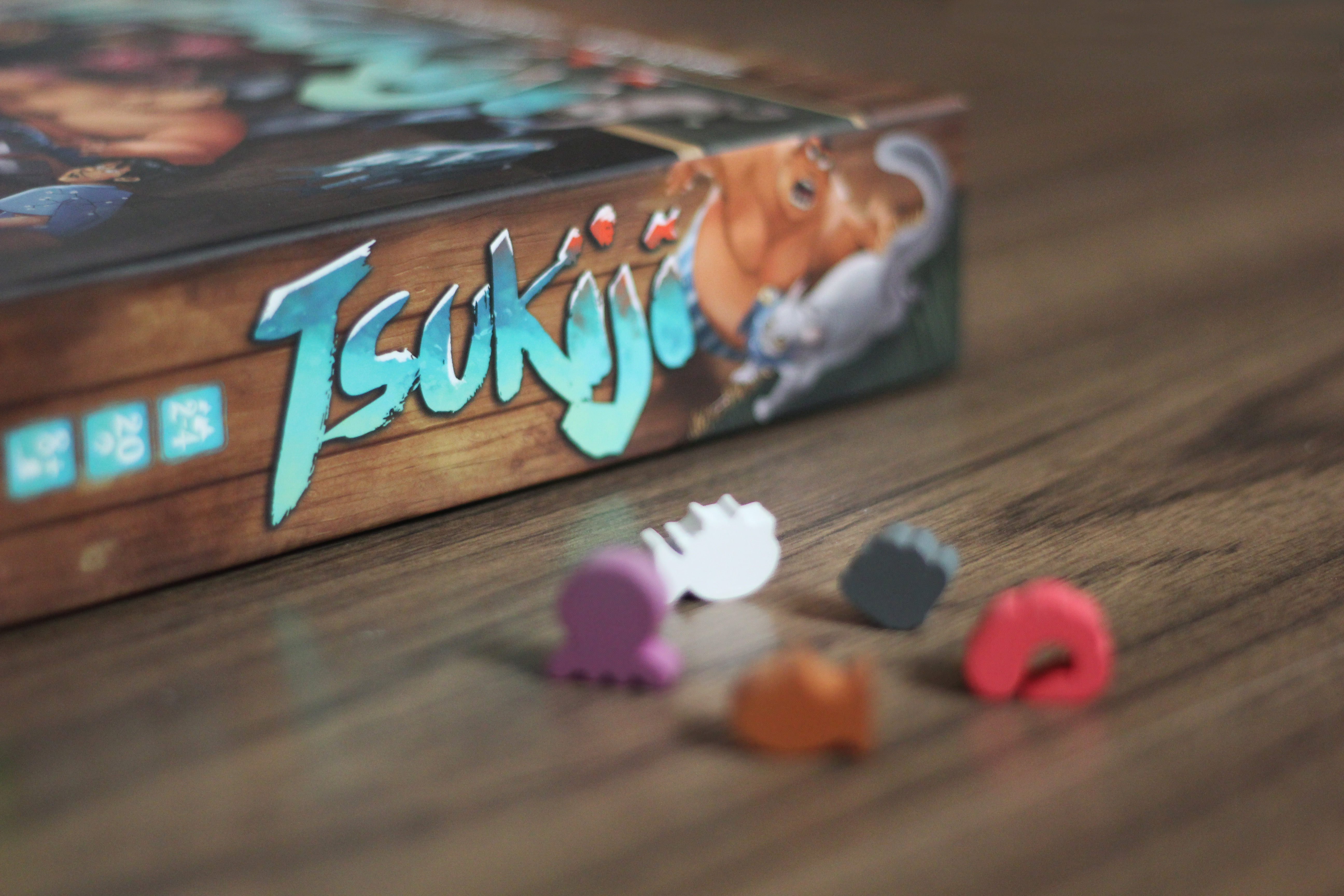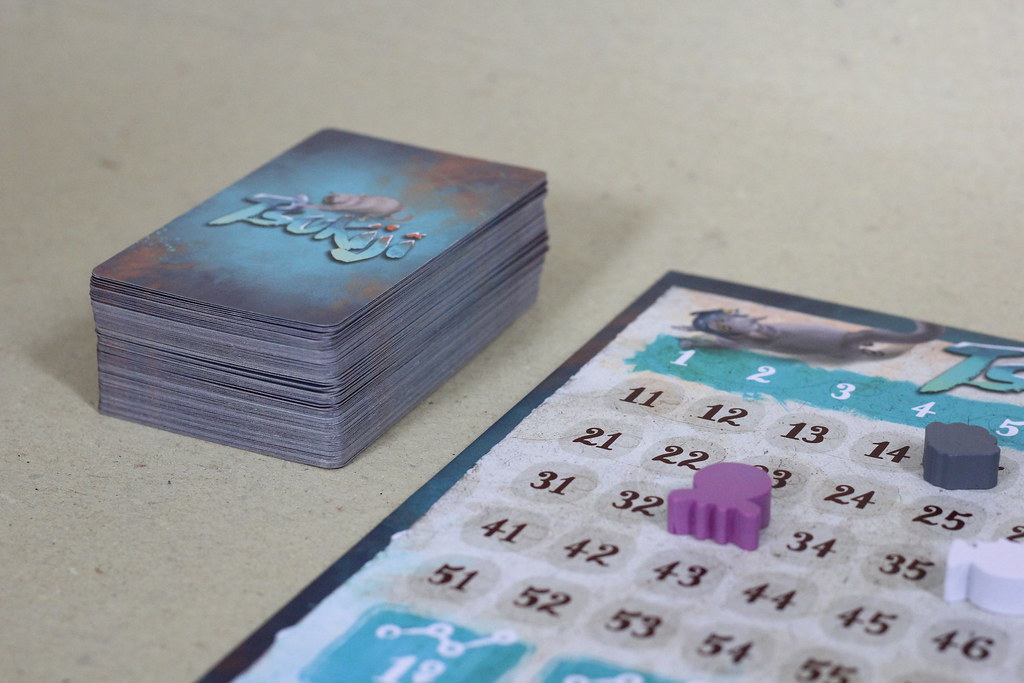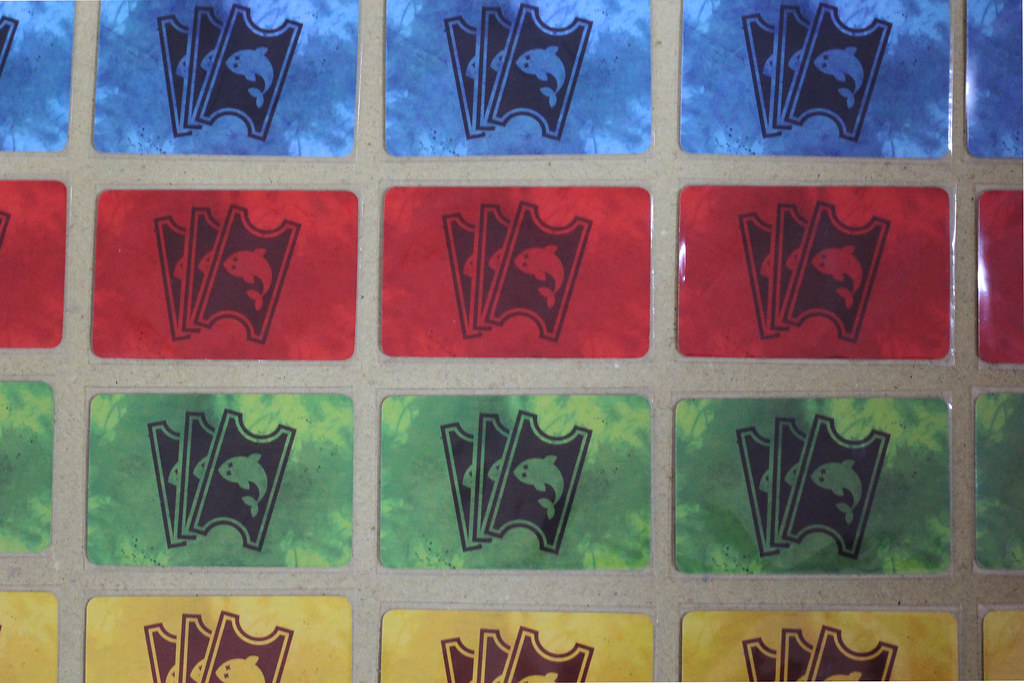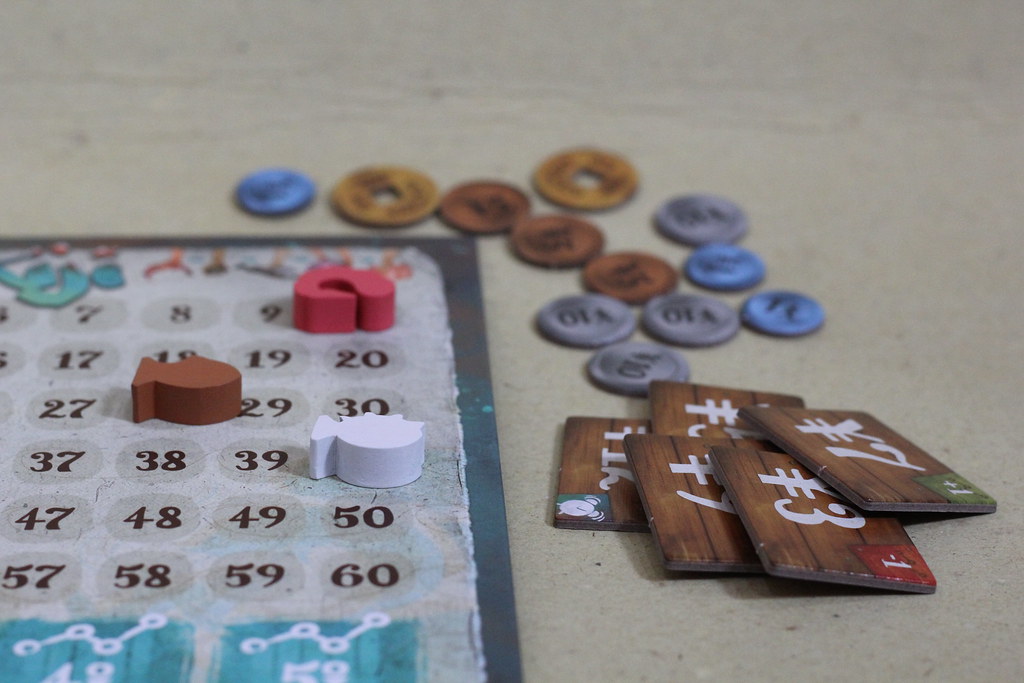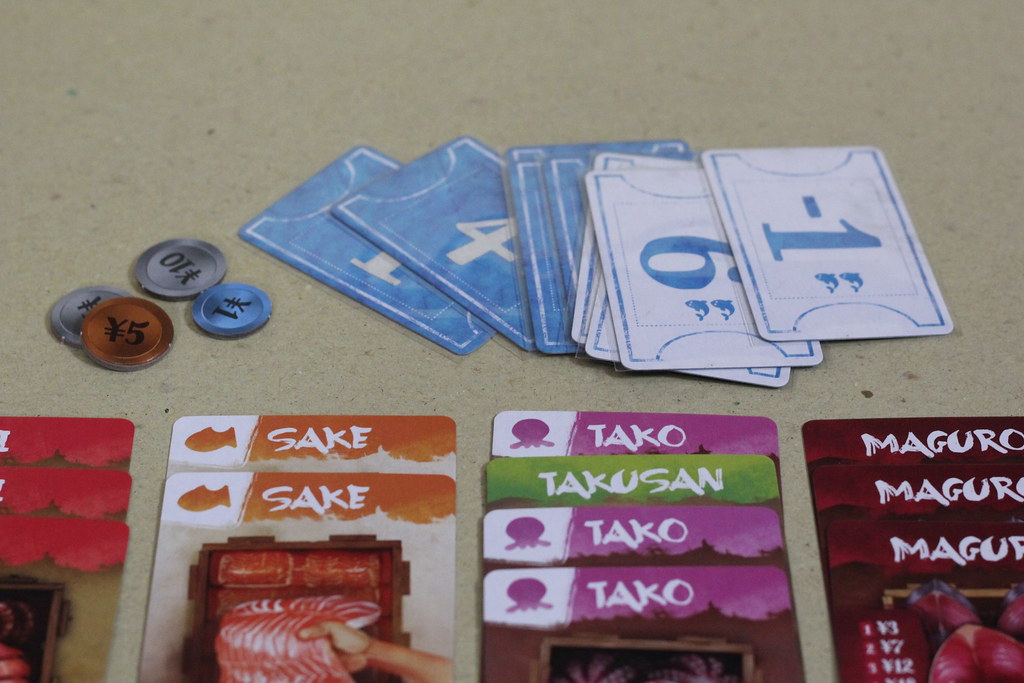Calling All Sushi Lovers!
Who in the world would not love Sushi in this very modern and trendy era? Everyone who is everyone from all around the world practically love this Japanese delicacy. But what people these days don’t know is the real effort that went down to serve customers these delicacies back in the days. We are talking way back to the 1930s when the largest wholesale fish and seafood market first opened in the heart of Tokyo, the Tsukiji Market. Reliving the early days of the famous Japanese fish market, Brazilian-based Redbox created Tsukiji where people will compete as restaurant owners to get the freshest ingredients in the market.
How does one compete in Tsukiji? Just as how any buyers would do in a real life market, of course. What the market offers today will differ from the previous or next day, and it all depends on the buyers. The price of Ebi (Shrimp), Hotategai (Scallops), Sake (Salmon), Tako (Octopus), and Fugu (Puffer Fish) will be manipulated by the players depending on the set of Product Cards they purchased during the day (except Maguro (Tuna) that has a different counting system). Beware of the lurking Yakuza who’ll come visit you to collect his “share” of the market. *evil laughs* But do look forward to a Joker (Takusan) card that can act as any other product you need to hoard most. Don’t forget to also mind that the highest buyer can get the advantage of being the first player for the next turn, so you either go big or go home.
Let’s Open the Market
The setup of the game depends heavily on the amount of players. You will only use the cards with the same amount of players depicted at the bottom, shuffle it, and separate the unused ones back into the box. The Quotation Board will be set in the middle of the table, with the Coins and Price Tablets (don’t forget to check the number of players written behind it) around it. Place the five Product Markers according to the picture depicted at the top right. Now, the players get to choose the color of their option and the Evaluation Tickets of that color (again, set aside the cards with number of players more or less than you’re playing with). Don’t be afraid to smell a bit fishy after that fish you had at lunch or last to eat a fish, cause it awards you with the First Player Token. Last and foremost, the ¥¥¥. First player gets ¥48, second gets ¥3 more, third gets ¥3 more than the last, and fourth gets more again (Money in exchange of opportunities, the sad fact of real life) . And now, you’re all good to go on your seven day (round) journey in the competitive Tsukiji Market!
SEA.FOOD.WAR
It’s another busy morning in the Tsukiji Market, and as the market opens, the first phase starts: Offer. Three cards are stacked face up into columns (three columns for two players, four columns for three players, and five columns for four players) in the center of the gaming area. These cards will represent what the market has to offer that day.
Then the Evaluation starts where you and your fellow merchants evaluate (predict, gamble, you name it) how you want the outcome to be and while also considering what the a might do. Then each of you put the Evaluation Tickets face-down in the bottom of each stack of columns according to your gut.
Now to ruin the friendship, we continue to the Quotation phase. (That’s right, we don’t like seeing you being just friends, fight, fight, fight) Reveal the Evaluation Tickets, but before you start accumulating the number, count the effects of the Special Annulment Tickets (if there are any) first. Count the value of each batch, then start placing the Price Tablet where the highest goes with the highest value and so on. After placing the Price Tablets, each player collects their Evaluation Tickets and don’t forget the Special Annulment Tickets (again, if there are any). In a case of a tied amount between the columns, the one furthest left will receive the higher Price Tablet. Yakuza and Tuna (Maguro) cards are ignored in this phase.
Market Adjustment are then applied to the Quotation Board. Look at the top right corner of the Price Tablets, that number indicates how much you should add or subtract the value of each products on each columns (always start from the furthest left, Shrimp in this case). If a product ends in the same number value as the other, the last one will be put on top.
And finally you get to the Purchase phase. It starts from the first player, the player who bought the highest priced batch of products or if no one bought it during the round, the previous first player mark holder, then it moves clockwise. A player purchases a batch of three products, when it has a Yakuza card, then he / she must eliminate a product card from that batch, and are only left with one, since the Yakuza also follows into the discard pile. Then you stack each product into batches in your area. Takusan cards have to be activated immediately so you have to decide at that instance which batch of product you want it to join. After everyone has purchased their choice of columns, there will always be a minimum of one columns left which will then be moved to the discard pile (let’s hope it’s the one with the most Yakuzas, yikes!).
By this time around, you might be wondering how could you make do to the last day with the money running faster than water? Worry not, ¥3 is there to the rescue. You can sell a type of product in exchange for ¥3, and it always has to be a full row. No matter how much of-a-kind you have in one row, you will only get ¥3. But you can use this action at any time, with the right timing, that small amount might lead to bigger results later on.
Going Once, Going Twice, and the Highest Bidder Goes to….
You might be worried after collecting all these columns
of products that they might not be worth any Victory Points (VP) right? Worry not, they do. BUT! What’s important is the Quotation Board though. Time to see what all those bidding and predicting has resulted.
Shocked? Of course!
“Who’d knew Tako which was leading is now on the tail of its fishy fellows. You were also rooting for Sake weren’t you? Guess Fugu’s gonna be the star product of the week, huh?“
(Disclaimer: This is just a picture of how the game might end, any similarity with my your gaming experience might just be a coincidence).
Now you’ll place each product token at the bottom of the Quotation Tray starting with the leading product, the second highest, third, fourth, and fifth. Then you can see how much you have to multiply for each product you have in your collections. The VP from Maguros are counted according to the amount you have on your hand, naturally the more the better. After tallying up all the VP from the products, add the leftover money you have in your hand too. And thus, the richest in VP is crowned the winner. *pops confetti*
Let Granny Teach You a Lesson or Two
Back in my old (gaming) days, the highest buyer doesn’t guarantee you the title of the winner in the end. Yeah, you get the First Player mark for the next round, but look at the money you have left, will it be enough to last you till the last round? And are you that sure that that exact product will be leading till the end of the game? Exactly, there’s so many aspects to be considered. There’s always the option of not buying anything if you see that the leftovers does more harm than good for you like imagine you are left with the option of two columns, each with two Yakuzas (Bye, Felicia). Remember that ¥3 thing I mentioned so often? Don’t forget to trade in rows of losing (dying, I’d say) products for it. You won’t need to wait until you have three-of-a kind, just one will do, and that ¥3 will soon pile up and help you purchase the highest priced stack during the next round. If the amount of player is enough to use the Special Annulment Tickets, do use it to your advantage. If you feel like you’re going to lose, might as well take the others on board of your sinking boat. By that I mean, sabotaging the Quotation Board. Who wants to lose alone, right? *winks*
Addiction > Seafood Allergy
This might possibly the only way for those poor souls with seafood allergies to be this close with seafood. And addicted! Pun aside, I absolutely love this game! The art, components, game play, duration, everything is just so thought through. Oh God, I just can’t get enough of the art of this game. Redbox even offers you fancy metal coins to really get that 1930s Tsukiji vibes! One thing that I thought could be improved is the Quotation Phase. Laying out and opening 20 Evaluation Tickets in seven rounds one by one sounds quite tiring, don’t you think? Maybe amp it up like how an open auction will be where each person holds up a board instead of laying down tickets? But as tiring and dull as the Quotation Phase is, me and my friends are still so very addicted to this game. It’s simple enough for beginners, but also intricate enough for old timers. How I’d like to let you guys know how many newbies you’ve “caught” into playing Tsukiji just from seeing the art at first, and “hooked” more as they start to play. In a way, ithis game also helps promote the real Tsukiji Market itself, and by Brazilians to top it off! Great job, guys! よくやった!Bom trabalho!
Okay, enough talking, care to grab some Sushi with me?

